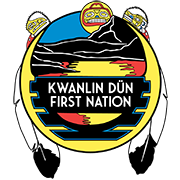November 21 to 27 is Restorative Justice week in Canada.
This week is an opportunity to talk about different approaches to justice.
And, how the ideas behind Restorative Justice can be used in criminal cases, and also in other places you might not expect.
So, what is Restorative Justice?
It’s a process that can be applied in many different ways depending on the circumstances … and that’s the beauty of it.
The basic ideas are
• Respect … The person and community that was harmed has a say in the process and in the outcome.
• Accountability … The person who caused the harm takes responsibility for their actions.
• Empathy … The person who caused the harm understands how their actions affected others.
• And, Reparations … The person who caused the harm has the opportunity to heal the harm instead of merely being punished.
These basic ideas can be applied all sorts of things, like resolving issues at work, at school, in families, and even to large-scale national issues.
For example, the work of the Truth and Reconciliation Commission is based on Restorative Justice principles.
Here at Kwanlin Dün, we’re developing restorative justice programs that are rooted in Indigenous law, traditions, values and culture that work towards healing relationships and restoring balance.
You can find out more at www.kwanlindun.com.
